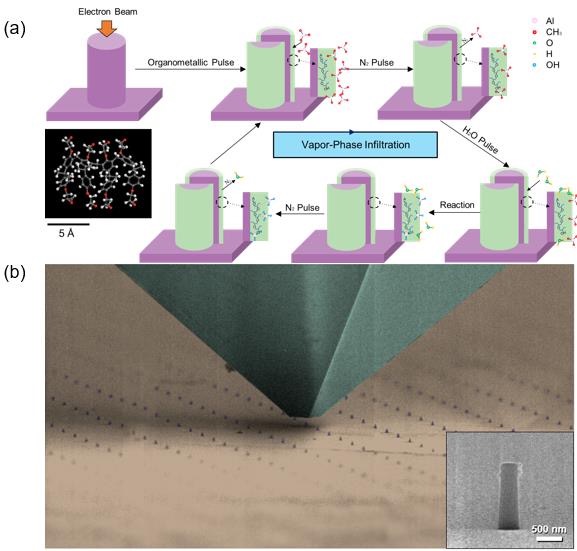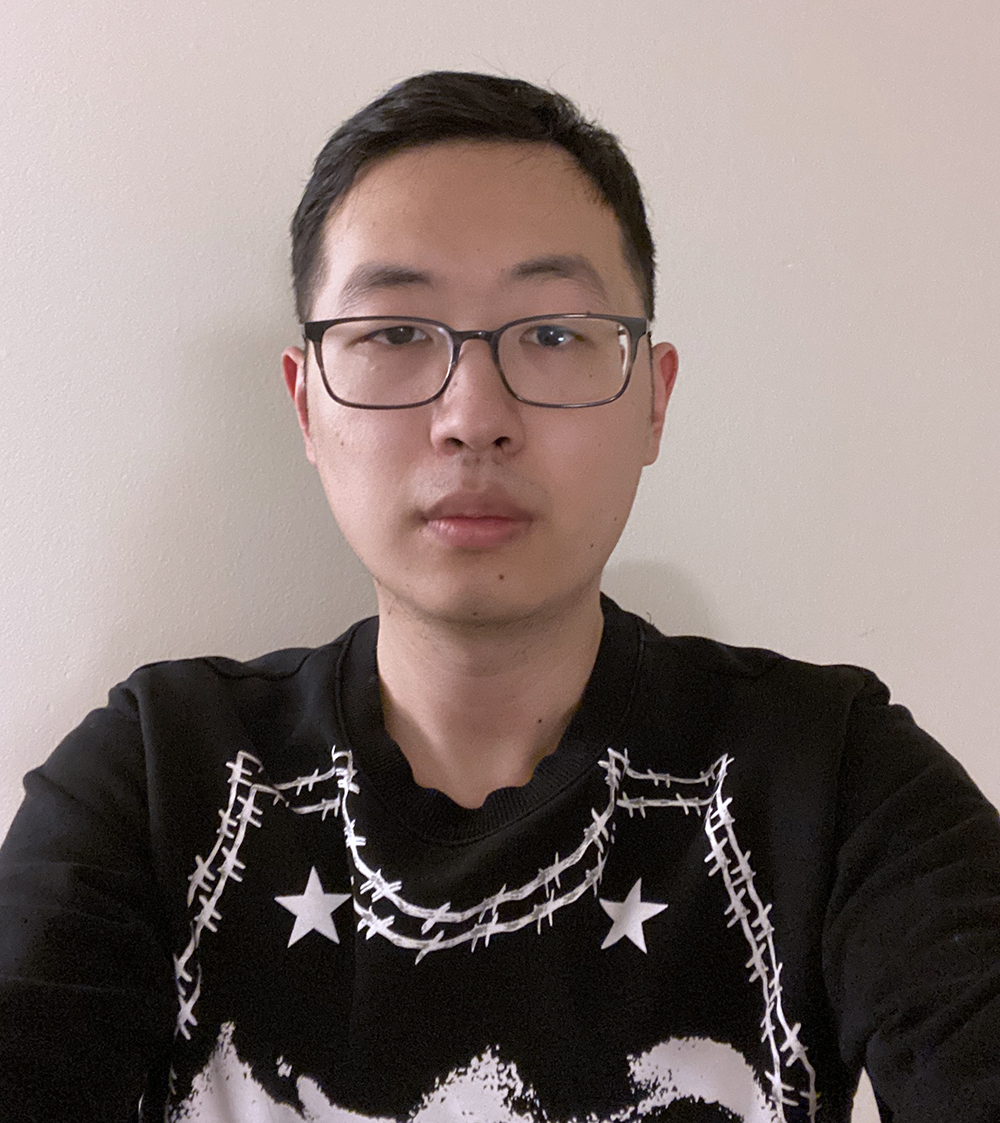Discovering the Power of Materials Science at UConn: “Material is the foundation of everything.”
By Megan Andrew, Written Communications Assistant
Zhongyuan Li, a fourth-year UConn MSE graduate student, has recently published “Unraveling the ultrahigh modulus of resilience of sequential-infiltrated core-shell polymer nanocomposite nanopillars” in the Materials & Design journal, a multi-disciplinary journal that seeks to bring together aspects of materials science, engineering, physics, and chemistry. In Li’s research, the resilience of the SU-8 polymer is explored in-depth. “When a material is deformed due to impact, the material can restore to its original shape if the resilience is high enough,” Li said.
The SU-8 polymer he is studying is widely used to make micro/nano electromechanical systems. Improving the resilience, in turn, improves the reliability of the overall sensors and actuating systems, for instance mass sensors, accelerometers, and even optoelectronics.
As part of Professor Seok-Woo Lee’s research group, Li delves into the development of hybrid organic-inorganic polymer nanocomposites. His research is supported by the National Science Foundation’s Mechanics of Materials and Structure (NFS- MoMS).
When Lee was looking for graduate students who could study the mechanical properties of polymer composite materials in 2019, Zhongyuan came to UConn to join his group. “My project and his background matched perfectly! I learned a lot from him as my knowledge of polymers was lacking until now,” Lee said.
“The best way to improve the resilience of polymer materials is to make polymer composite. But making nano-size polymer composites is extremely difficult,” Li said. In his research, Li uses a unique method called vapor phase infiltration to make AlOx/SU-8 composites. After solid-state infiltration of nanoscale aluminum oxide (AlOx) particles into an SU-8 polymer matrix, the resilience of SU-8 is greatly improved, Li said.
Li does acknowledge some limits and room for improvement, due to a still relatively shallow infiltration range. The group is working towards increasing the infiltration depth so resilience can be improved even further.
Li explains that his career path in materials science and engineering (mse) stems from encouragement from his mother, who works in the chemical industry. His inspiration especially grew during his senior year of high school, when Li became interested in utopian science fiction and was enthralled with imagining the technologies that existed in books and movies. A space elevator depicted in the movie “Wandering Earth II” is one of his favorite examples.

Figure (a) Schematic illustration of the preparation of a-AlOx-infiltrated SU-8 nanopillar by vapor-phase infiltration (VPI) method. (b) SU-8 based nano-pillars fabricated by electron-beam lithography method.
“The only limitation for actually realizing this technology someday is the strength of material,” he said, “I think I can make some progress in this area.”
Following graduation, Li plans on further advancing research, publishing more, and ultimately creating products based on his continually-growing knowledge in the mse field.
Li received his bachelor’s degree in Polymer Science and Engineering from Sichuan University in Chengdu City, Sichuan province in China. He won the ‘Best Data Analysis/Presentation’ prize at the 2020 International Mechanical Engineering Congress & Exposition (IMECE) conference. But lately Li explains he is focused more on “science-based research, rather than engineering.”
The university’s ranking combined with the friendliness of the faculty advisor are truly what made Li choose to attend UConn for his graduate degree, he said. “I think my experience as an MSE graduate student is a mixture of loss and exhilaration.” That’s because during his first year at UConn, the pandemic occurred, and Li was forced to stay home without experiencing the hands-on work of the UConn laboratories. Fortunately, as life gradually returned to normal, “life at UConn MSE became colorful,” as his hand-on experience was finally able to flourish in the labs.
Professor Lee also remembered how the pandemic affected Li. “When the pandemic started, he quickly switched modes from experimentalist to theorist. He began studying various mathematical models of composite mechanics and creating his own calculation code to quantitatively understand why his composites exhibited both low Young’s modulus and high yield strength. Although he did not have access to laboratory equipment, I was really impressed with how he was so successful at performing numerical calculations to better understand the experimental data he fortunately obtained before the pandemic,” Lee said.
“I learned to use many high-end experimental instruments, got help from more senior group members, and developed friendships with them. I also had the chance to visit other advanced laboratories like Brookhaven national lab and the Kavli Nanoscience Institute at Caltech,” Li said.
Each week Li attends a seminar as part of the faculty mentorship program, in which each student is assigned a faculty advisor to assist them in their research journey. Li finds the seminars to be a great opportunity to ask questions and learn more about related research. He is also quick to point out “my supervisor is very friendly and cares about his students.”
“I was impressed by Li’s deep insight into polymer mechanics and his remarkable ability to pivot and do important theoretical work. I am delighted that all his efforts are finally published in one of MSE’s high-profile journals, the Journal of Materials and Design,” Lee said.
Backed by his research success and satisfaction, Li gives undergraduate students a word of advice:
“I encourage them to join different research groups to experience the experimental process firsthand, and then combine those experiences with what they learned during their undergraduate studies to make a career plan for their future,” he said.
Published: May 8, 2023
Categories: graduate students, news, polymer, research
Available Archives
